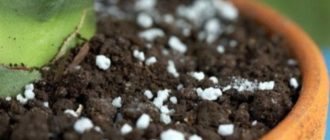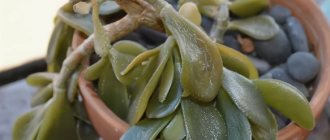Monstera at home
Author: Natalya Category: Indoor plants Published: February 24, 2022 Updated: May 20, 2019
plant
(lat. Monstera) is a large vine and belongs to the Araceae family.
In nature, monstera flowers grow in the tropical forests of the equatorial regions of Central and South America from the Yucatan Peninsula and Mexico in the north to Brazil in the south. At the end of the 18th century, the monstera flower was introduced to Asia, and then spread throughout Europe and Australia. I would like to believe that the name Monstera comes not from the Latin word Monstrum, meaning monster, but from monstrosus, which means “amazing, bizarre,” but the myths that haunt the plant cast doubt on this. European explorers of the South American tropics were not so much surprised by the tree as they were frightened: the monstera vine is of such impressive size that it looks intimidating. And where fear arises, legends are born, for example, that the monstera is an energy vampire, that the roots of the monstera entangle the victim and strangle him, and all that. Let’s not retell fables, but rather let’s talk about what the monstera indoor flower actually is in modern floriculture.
Plant treatment
The origin of monstera is the tropical forests of Brazil, Central and South America. Today it is an exotic-looking indoor evergreen flower that has minimal care requirements and grows up to 4 meters in 5 or 6 years.
If a pest is detected, you must try to get rid of it using folk remedies (infusions of onion peels, tobacco or calendula, crushed garlic, a solution of tar or laundry soap). They are less radical and harmful both to the flower itself and to the people living in the apartment. The measure is justified when there are few insects and the plant has not had time to suffer much. Otherwise, it is better to use synthetic insecticides.
Timely treatment will help preserve Monstera
In order for the Monstera to please the owner with its appearance, it is necessary to establish proper care. First of all, it is removed from the draft and protected from accidental damage. You need to carefully select new soil for replanting the vine. The wrong composition is detrimental to the flower. The plant requires regular feeding and watering, diffuse lighting and spraying of leaves.
Planting and caring for monstera
- Flowering: the plant is grown as an ornamental foliage plant.
- Lighting: bright diffused light or partial shade.
- Temperature: in summer – normal for residential premises, in winter – 12-14 ˚C.
- Watering: regular and plentiful: the substrate should be slightly moist all the time.
- Humidity: high. It is recommended to regularly spray and wash the leaves with a damp sponge.
- Feeding: from March to August twice a month with complex mineral fertilizer for decorative deciduous plants; during the rest of the year, Monstera does not need fertilizing.
- Rest period: not clearly expressed.
- Transplantation: young plants are replanted annually, four-year-old plants - once every 2-3 years, old ones - once every five years, but the top layer of substrate up to 5 cm thick must be changed in pots of large plants annually.
- Garter: the vine is tied to a support dug into the potting soil - a ladder, a tube filled with moss or an artificial trunk wrapped in copra.
- Reproduction: sometimes by seeds, but more often vegetatively (cuttings and shoots).
- Pests: ivy scale insects, thrips, mealybugs and spider mites.
- Diseases: sooty fungus, stem rot.
Why do indoor monstera leaves turn black and dry?
Monstera's leaves often turn yellow if it is not satisfied with the amount of light or moisture.
The plant is usually placed on or near a windowsill on the southwest or southeast side so that all leaves receive enough light. The northern window has much less natural light.
If additional illumination with an electric lamp is not provided, the plant will lose its rich green color and growth will slow down. But direct sunlight is also dangerous - it can burn.
Leaves turn yellow if the air in the room is dry. On a hot day, the monstera does not need to be watered more often: the roots consume less moisture; they need to be sprayed with clean warm water and wiped with a damp soft cloth.
An air humidifier can save the situation; a pot with a plant can be placed on a tray with wet expanded clay or simply placed around a container of water.
Some gardeners wrap aerial roots with wet cloths at high temperatures.
If you water the monstera too often in winter when the air temperature is low, its leaves will turn yellow. Yellowing and loss of turgor will result from placing the pot in a draft. If the soil in the pot is too heavy or it has become muddled because it has not been changed for a long time, the result will be the same - yellowing, slow growth, discolored spots may appear on the leaves.
Why do the leaves turn black?
Leaves may turn black from the cold when the air temperature drops below the permissible level. But usually this is how the consequences of violating the hydration regime manifest themselves. If you water the plant too often and do not drain excess water from the pan, the leaves will become covered with black spots.
Most likely it will be dry or wet rot. Excessive moisture, like excessively heavy soil, does not allow air to pass through, the roots are left without oxygen, and they can begin to rot.
It is clear that rotting of the roots will immediately negatively affect the condition of the above-ground part and will appear as black spots.
With insufficient watering, when the soil dries out completely, the leaves, starting from the bottom ones, will first turn yellow and then turn black. If the situation is not corrected, the entire plant will dry out.
If the tip of the leaf turns black and spots appear on the plate, this may indicate pest damage. Why is this happening? Dry air around flowers creates conditions for the proliferation of spider mites and thrips. Aphids or scale insects can move from other plants, feed on the sap of the plant, and secrete substances that attract the fungus.
Inattentive flower growers may only notice black spots that gradually increase in size - this is the growth of sooty fungus. The fight must be carried out not only with it, but after carefully examining the entire plant, you need to find aphids or scale insects. The fungus is removed with a cotton swab dipped in soapy water, and then the plant is treated with special preparations to get rid of the root cause.
Why do the leaves dry out?
Why do monstera leaves dry out if there are no drafts, pests, and a comfortable air temperature is maintained? Most likely this occurs due to lack of moisture. The earthen lump should not dry out either in winter or in summer. The soil should always be kept slightly moist, avoiding stagnation of water in the pot.
The frequency of watering depends on the season, temperature and humidity level in the room, and the age of the plant.
Therefore, it is difficult to accurately indicate the watering schedule, but an attentive gardener will set it himself, you just have to watch the monstera, and before watering, check the soil moisture with a dry wooden stick or just your finger.
Wood ash, which is applied simultaneously with watering, or special fertilizers for monstera can save the situation. You can replant the flower, completely change the soil, take a slightly larger pot.
This must be done carefully, trying not to injure the roots.
What to do
To avoid such troubles, you need to create comfortable conditions for your indoor flower and provide it with attentive care. Monstera loves sunlight, but not direct sunlight. Daylight hours should last at least 10–12 hours. If there is not enough sun, you should get a phytolamp.
The air temperature in winter should not be lower than +16 °C, and watering is carried out every 10–15 days. If the difficulties are the result of improper watering, then it urgently needs to be restored.
When the soil gets too dry, it may be enough just to start watering correctly, but if it is overwatered, replanting may be necessary. Replanting will save the plant if the soil in the pot is too heavy, rotten or infertile.
The rotten parts of the roots will have to be cut off and the sections treated with charcoal.
Natalia
contemplator
- Activity: 99k
- Gender: Woman
Natalia
contemplator
Monstera flower - description
So, the indoor monstera is an evergreen plant, a long-time favorite of gardeners who appreciate its exotic beauty and ease of care. Monstera at home grows to four meters in length, literally within 5-6 years, but since the plant is a vine, it needs stable support. In addition, using a support is very convenient, since a large monstera takes on the shape of a tree and takes up less space, and also looks more impressive. Carved monstera leaves reach a diameter of 45 cm, and young leaves are whole, but over time holes appear in them, and the larger the leaves become, the more slits there are in them.
In addition to the ordinary roots with which in nature the vine grows as an epiphyte to a tree, the aerial roots of the monstera are also of great importance, reaching right down to the ground and feeding the plant from the soil. Monstera blooms in the same way as other araceae, with an inflorescence similar to an ear of corn wrapped in a blanket. The monstera fruit is a berry about 20 cm long with a banana-pineapple flavor. By the way, in Australia, monstera is bred precisely for its nutritious and tasty fruits. But a monstera grown indoors is unlikely to be able to treat you to a delicious fruit, since monstera blooms infrequently at home.
Monstera - can you keep it at home?
Readers sometimes ask why Monstera cannot be kept at home. And really - why? I don’t know who and when examined the monstera for the presence of vampire properties or toxins, but personally I didn’t notice anything like that in it. The only factor that makes you think about whether to keep a monstera in the house is its size. A beautifully formed monstera tree grew in my house for several years, until I had to part with it because it, and not me, became uncomfortable - the monstera no longer had enough space in my modest apartment.
I gave the plant, which had become too large, to my friend, and she placed it in the lobby of her restaurant, which the monstera still decorates today. But if you are sure that keeping a monstera in the house is harmful, well. there are many other plants that are just as good. Well, for those who, like me, believe that Monstera can be kept at home, I recommend, just in case, not to place it in the bedroom or nursery.
Why do dollar tree leaves turn yellow?
The main reason for yellowing foliage is a metabolic failure. This happens because the plant lacks light, moisture, nutrients, and so on. This is why the leaves of Zamioculcas turn yellow - it sheds them as ballast. This reduces the consumption of moisture and nutrients, and the plant has a chance to save younger shoots or at least the rhizome.
Healthy dollar tree leaves are dark green, glossy and succulent.
Note! In any case, the main reason for yellowing of the leaves will be improper care. Even the occurrence of plant diseases or the appearance of pests on it is the result of unsuitable conditions
How to save a flower if it dies
Before saving zamioculcas, it is important to find out what exactly caused the flower to behave this way. After all, by applying rescue measures at random, you can completely ruin the plant
To do this, you need to watch it for some time and find out what exactly your home phytofriend lacks. In the future, proper care should be restored and maintained.
Caring for Monstera at home
How to care for monstera
Monstera is unpretentious, and caring for it is not burdensome. If you want the leaves of the plant to be decorated with fancy holes and slits, provide it with bright, diffused light. As a last resort, keep it in partial shade, but full shade will not benefit the decorative qualities of the plant. In summer, the monstera will be satisfied with the usual temperature for this time of year, but in winter it is advisable to give it a break from intensive growth and provide coolness - 12-14 ºC. Protect the plant from drafts and sudden temperature changes.
Monstera reproduction
Monstera reproduces by seed and vegetative methods.
Monstera seed propagation
How to propagate monstera by seed? Moist sphagnum moss is placed in ziplock bags, seeds are added, the remaining volume is filled with air and the zipper is closed. The percentage ratio is approximately this: 5% moss with seeds, 95% air. Crops are kept in a bright and warm (25-28 ºC) room. Shoots appear in two weeks or a month, and after the seedlings develop two leaves, they are planted in containers with a substrate of the following composition: one part each of sand, leaf and turf soil. Seedlings are grown at a temperature of 25 ºC in bright diffused light, transplanted into a new pot every year.
Propagation of monstera by cuttings and shoots
How does monstera reproduce besides the seed method? After all, its seeds do not have good germination, and it takes a very long time for Monstera to grow from seeds. That is why amateur flower growers prefer a faster and more reliable method of propagation - vegetative. This monstera breeding takes place from March to June. Parts of the stem with one or two leaves, the top of the trunk or lower side shoots are used as cuttings.
Monstera cuttings or its top are rooted in water under bright diffused light at a temperature of 25 ºC. The water must be changed every two weeks. After a few weeks, roots will appear, let them grow, and then transplant the cuttings into soil to sow seeds. When the monstera leaf regains its elasticity, you can feed the rooted cuttings with complete mineral fertilizer at the rate of 1 g per 1 liter of water. Some gardeners immediately plant cuttings in the ground and cover them with glass jars, thus creating a greenhouse effect. After 3-4 years, the young, strong plant is transplanted into a spacious pot.
The main causes of yellowing foliage
There are many factors influencing the change in color of plant leaves. To eliminate the problem of yellowing leaves, you need to find the cause of its occurrence.
Incorrect lighting
A native of South America does not like bright sun. Under the influence of its rays, monstera leaves quickly begin to turn yellow and fade. If a cause is discovered, immediate action must be taken. You need to move the flower away from the window and provide it with diffused light. If moving is impossible, then cover the window with a curtain.
Proper watering will save you from many problems
The opposite problem (lack of light) also leads to yellowing of the foliage. Placing a container with a plant in a dark corner can destroy it. Monsterea tolerates lack of light well, but does not like shade.
Water imbalance
To determine the reason why monstera leaves turn yellow, you need to pay attention to soil moisture. For full existence and active growth, the plant needs a lot of moisture.
Large leaves need sufficient water.
It is worth paying attention to the nature of yellowing: limited light areas will appear on old foliage, which in the future can cover the entire leaf. Young leaves initially look limp and die quickly
Along with yellow spots, brown spots often appear. Why do monstera leaves turn black, what to do in this case? The issue here is also a lack of moisture. It is necessary to provide the plant with regular watering with a sufficient volume of water. To speed up recovery, spray the leaves.
Important! At low temperatures, Monstera is watered less frequently than during hot periods. In winter, its growth slows down and resumes with the onset of the spring months.
Excessive watering leads to similar problems. By overwatering the plant, you can destroy its root system. If the leaves of a monstera turn yellow, then this is what you need to do: dry the soil as quickly as possible, remove rotten roots, apply fertilizing and normalize the watering regime.
Temperature
If in winter the tips of Monstera leaves dry out for some reason, this is due to the beginning of the heating season and, as a consequence, dry and hot air. This regime is very stressful for the plant. It is recommended not to place the container with the flower near central heating radiators.
If the room is hot, the monstera needs to be watered; it will not go into suspended animation in the fall at this temperature. If the soil dries out quickly, watering is done daily. The surest sign that the plant is hot is curling of the leaf edges.
Important! If the plant has turned yellow and some of the leaves have dried out, then the vine is suffering from high air temperatures. This can happen at any time of the year
If conditions are not changed, the plant may quickly die.
In the cold season, in the room where the monstera is located, the temperature should be about 17 °C. In warmer air, the plant will grow vigorously, bypassing the resting phase, which will weaken the flower.
Incorrectly selected soil
Another reason for the yellowing of monstera leaves is improperly selected soil for replanting. Beginning plant growers often leave the flower in the same container with soil where the flower was when purchased. It is not right. Usually, a lot of stimulants and energy drinks are added to such soil. Their prolonged exposure to a houseplant worsens its condition. After a week of adaptation to the new location, the vine needs to be replanted and the soil replaced.
The easiest way is to buy a ready-made mixture for monstera, but you can make it yourself. You need to take a mixture of earth, fine sand, peat and humus in equal proportions. Monstera will be grateful for soil that is neutral in acidity, but will also thrive in slightly acidic soil.
Nutritional deficiencies
If the monstera does not have enough nutrition, it turns yellow and sheds dry leaves. To find the cause, you need to observe the growth of aerial roots. If there are a lot of them and active growth is observed, it means that the soil does not have enough nutrients and urgent application of fertilizers is required. Complex store-bought preparations for Monstera will help
It is important to observe the proportions and frequency of application of the substance (indicated on the packaging). You can prepare your own nutrient mixture from ash and nitrogen fertilizers
Important! Monstera leaves often do not turn completely yellow, but only along the edges. This happens when the flower is chronically starved or is in a very cramped container.
The problem is solved by transplanting the plant into a spacious container with adding or changing soil. Feeding with flower fertilizer will have a beneficial effect on the yellowed vine.
Lack of microelements has a bad effect on the condition of monstera leaves
Monstera pests and diseases
Diseases and insects
You won’t have any problems in this regard with Monstera: it is extremely rarely affected by pests, and it is also resistant to diseases. And only the most careless owners can subject the plant to attack by scale insects and spider mites, whose presence is not so easy to notice. If you do find pests, try wiping the monstera leaves with a soapy solution, but if this does not help, you will have to apply an insecticide treatment - actara or fitoverm.
Types and varieties of monstera
The Monstera genus is quite diverse in nature - about 25 species, but only two of them are grown in culture.
Monstera deliciosa, or attractive (Monstera deliciosa)
In greenhouse conditions it can grow up to 12 meters in height, in a room - only up to three meters. With good care it can bloom every year, but the fruits ripen only in a greenhouse. A variegated form (variegata) has been developed, which is more demanding of care, but does not grow as quickly as the main species. Also popular is the delicious variety Borsigiana, or Monstera Borsiga, bred from Monstera - not as powerful a plant as the original species.
Monstera oblique, or unequal-sided (Monstera obliqua)
A plant from humid Brazilian forests with graceful lacy elliptical leaves up to 20 cm long and 6 cm wide. The leaves are entire, unequal at the base, with a short petiole (12-13 cm), on a short peduncle (7-8 cm) there is a few-flowered inflorescence 4 cm long, but this species does not bloom in cultivation.
Monstera diseases, their causes and treatment
Monstera is a beautiful evergreen vine native to South America. It has very interesting leaves, which with age turn from solid to carved. Monstera grows quite quickly , and with proper care at home, after three years it can easily occupy half the room of a standard high-rise building. Despite the fact that this type of vine is unpretentious in care, it is affected by diseases and pests quite often.
Common problems when growing Monstera
An unpretentious plant is rarely affected by diseases if it is given proper care and watering rules are followed. The same applies to pest settlements - they do not come to places where good conditions are not created for them.
Important! Monstera grows well in a permanent place. She is tolerant of shady environments, but loves space and fresh air.
Diseases and their treatment at home
Diseases to which monstera is susceptible:
- Fusarium is a fungal infection in the soil that loves moisture. When damaged, the roots of the flower rot, the stem becomes thinner, and the leaves turn yellow. There is no treatment, the monstera will die.
- Late blight is a fungus that causes root and stem rotting. Infection occurs through water, soil and equipment. A sign of the disease is brown-purple marks with a pale green area around, as well as a white coating on the bottom of the leaves. There is no effective treatment.
- Chlorosis - the leaves turn yellow, the leaf blade gradually becomes transparent, which also happens when the monstera stays in the light for a long time (try moving it to partial shade and observing). Iron chelate is suitable for treatment in the dosage indicated on the instructions (the product is sold in flower shops).
- Anthracnose – bright yellow spots appear with concentrated black or dark brown rings around them. For treatment, remove all affected leaves and stems, treat the plant with copper sulfate or Oxychom once every one and a half to three weeks. Repeat three times. Treatment is pointless if the entire flower is affected.
- Gray rot is the appearance of gray spots on the plant and tissue death. The disease is contagious to other flowers, so during treatment, quarantine the monstera and use your choice of Alirin-B, Fitosporin, Trichodermin, Gamair P.
Do not delay treatment so as not to lose the flower.
Pest extermination
Among the common pests that cause harm to indoor plants:
- Ivy scale – settles everywhere, the monstera becomes depressed, looks unattractive, the leaves turn yellow and crumble, and a sooty fungus appears. To combat, leaves and stems are wiped with soapy water, the air temperature is reduced and the humidity is increased. Apply a 0.2% solution of rogor, cut off the overly affected parts.
- Spider mite - settles at the bottom of the leaves and weaves a web on them, drinks the sap of the plant, causing it to wither and dry out. During treatment, regularly ventilate the room, increase air humidity, and treat the monstera with Actellik (15 drops per liter of water).
- Aphid – as signs of curvature of the tops, a sticky substance on the leaves, the appearance of black mushrooms. Pests are spreading rapidly. An effective remedy is mustard powder, poured with boiling water and infused (20 g per liter), sprayed over the entire monstera. A decoction of onion and garlic peels is also good.
- Trips – appears at elevated temperatures around, if the humidity drops overnight. It lives under the leaves, with light dots and a silvery sheen appearing on top of them. Insecticides are used for treatment.
- Mealybugs – their favorite place is young sprouts, which due to parasites become deformed, dry out and fall off. The flower is dying. Treatment with Actellik (15 drops per liter of water).
Inspect your monstera regularly to respond to an infection in time.
Symptoms of diseases
There are several symptoms that may indicate that your pet is sick. Many of these signs indicate not only illnesses, but also insufficient care of the plant.
Dark spots
In certain cases, dark spots on the leaves of vines are evidence that the plant is cold. To correct the situation, the location of the vine is changed to a warmer one.
In addition, the formation of dark spots on the leaves is often a consequence of the plant being too waterlogged. In this case, it is necessary to check the root system for the formation of rot.
If rot has already appeared, it is carefully cleaned off, and the bare areas are covered with activated carbon, dried, and transplanted into renewed soil.
Also, monstera leaves turn black in heavy soil, through which the passage of air is difficult. The soil, compacting during watering, deprives the vine's root system of the ability to breathe normally. Here, an effective solution to this problem would be to replace heavy soil with lighter soil. To do this, you can mix the soil with purchased soil for houseplants.
The leaves are turning yellow
Monstera leaves turn yellow for several reasons. In winter, the “pet” is especially sensitive to heavy watering and lack of full sunlight. In this case, the lower leaves of the vine begin to turn yellow first. To improve the health of the plant, it is necessary to reduce the number of waterings and install it in the brightest place or organize additional lighting.
The frequency of watering is directly dependent on the air temperature in the room. For example, if the mark on the thermometer does not rise above 16 degrees Celsius, then watering should be done approximately once every two weeks. When watering, use water at room temperature.
After watering, pay attention to the accumulation of water in the pan - after 20 minutes, be sure to drain the excess water. Otherwise, constant contact of the vine roots with water can cause them to rot.
If monstera leaves turn yellow randomly, this indicates prolonged exposure to ultraviolet rays. In order to correct the situation, you just need to choose a more comfortable illuminated place for the plant, but without direct exposure to ultraviolet radiation.
Care Tips
One of the main conditions for caring for monstera is to protect it from drafts and mechanical damage.
- Temperature. The optimal temperature for moderate growth and development of monstera is 16-18 degrees Celsius. It should be taken into account that as the temperature rises, the growth rate of the plant may increase.
- Lighting. For monstera, lighting close to tropical conditions is preferable. It is better to choose partial shade or diffused light, avoiding direct sunlight.
- Air humidity. The plant needs moist indoor air. If this is a problem, then spraying the leaves with water or periodically wiping them with a damp cloth will come to the rescue.
- The soil. Monstera grows well when planted in peat or garden soil with sand and humus. Drainage must also be used.
- Feeding. Monstera is fertilized by applying fertilizer once a week in the autumn-summer period. For this purpose, special mixtures for indoor plants are used.
To learn how to save a sick monstera, watch the video below.
Proper care and timely disease prevention reduce the risk of monstera wilting. Leaves affected by spots, yellowness, cobwebs and an unhealthy appearance of the flower indicate that it is kept in unfavorable conditions, and you are doing something wrong. Read below about how to pay attention to the symptoms in time and correct the situation.
Pests
In addition to diseases caused by fungus and insufficient care, monstera can often be attacked by insect pests.
Ivy scale
This pest spreads with great speed on the shoots, adventitious roots and leaves of Monstera. Very often, the scale insect hides on the inner surface of the leaf and looks like a brown plaque that is firmly pressed against the leaf.
Signs of a plant being affected by scale insects are: depressed appearance, loss of decorative qualities, yellowness and loss of leaves. Also, the detection of a sooty fungus that appears on the honeydew produced by the parasite will tell you about the scale insect pests. To eliminate it, wipe the sheet with a cotton pad or a piece of soft cloth soaked in soapy water. Increased humidity with a simultaneous decrease in temperature will help as accompanying factors
With a high degree of damage, it is almost impossible to fight this parasite. You can try removing the affected areas and treating the plant with a systemic insecticide.
Spider mite
This insect mainly lives on the underside of the monstera leaf blade. The harm it causes is the appearance of cobwebs, which dry out the leaf. The presence of spider mites can also be indicated by pale green dots on the leaves, gradually merging into a large spot. Affected leaves turn pale green and then die.
In order to overcome spider mites, Fitoverm is widely used, and to prevent its appearance , the plant should be regularly sprayed with water and kept in a room with humid air.
The opinions of plant care specialists always boil down to the fact that it is easier to carry out preventive measures than to subsequently fight parasites.
Infusions of onion peels, garlic, tobacco dust, and soap solution are used as folk remedies for the control and prevention of spider mites It is allowed to infuse and use all these means at the same time. To create an infusion, dissolve a tablespoon of the product in a three-liter jar of water and leave for two days.
It is better to use laundry or tar soap, first grating it on a coarse grater and softening it with water. The resulting infusion is diluted 2-3 times with water, filtered and sprayed on the plant.











